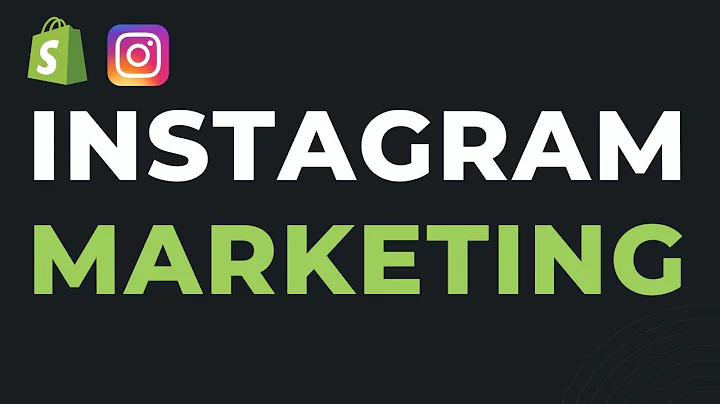Boost Your Shopify Store's SEO with These Optimization Tips
Table of Contents
- Introduction
- The Importance of SEO for Shopify Stores
- Three Types of Pages to Optimize
- Home Page
- Product Category or Collection Pages
- Information Pages
- Optimizing Collection Pages
- Adding Text Copy
- Optimizing Page Titles and Meta Descriptions
- Image Optimization
- Using Heading Tags
- Optimizing URL Canonicalization
- Implementing Product Schema
- Optimizing Product Pages
- Using Full Product Names
- Writing Detailed Product Descriptions
- Optimizing Page Titles and Meta Descriptions
- Image Optimization
- Using Heading Tags
- Optimizing URL Canonicalization
- Implementing Product Schema
- Optimizing Blog and Content Pages
- Writing Relevant Content
- Choosing the Right Platform for Content
- Optimizing Page Titles and Meta Descriptions
- Image Optimization
- Using Heading Tags
- Optimizing URL Canonicalization
- Implementing Schema for Blogs and Content Pages
- Conclusion
Introduction
Shopify has become a popular platform for e-commerce businesses due to its simplicity and functionality. However, many Shopify stores struggle with search engine optimization (SEO). In this article, we will explore how to effectively optimize a Shopify store for SEO, increasing organic traffic and sales. We will discuss the importance of SEO for Shopify stores, the three types of pages to optimize, and provide step-by-step instructions for optimizing each type of page. By following these strategies, you can ensure that your Shopify store is well-optimized and ranks highly in search engine results.
The Importance of SEO for Shopify Stores
Historically, SEO has been a compromise when it comes to Shopify stores. The simplicity of the platform often came at the cost of limited SEO functionalities. However, Shopify has made efforts to improve its SEO capabilities, allowing store owners to optimize their sites effectively. While there are still some limitations, the overall simplicity and functionality of Shopify make up for these drawbacks. Today, Shopify stores can be well-optimized and rank highly in search engine results, driving organic traffic and generating sales.
Three Types of Pages to Optimize
To achieve successful SEO for your Shopify store, it is important to understand the three types of pages that you should focus on optimizing. These include the home page, product category or collection pages, and information pages.
Home Page
The home page is typically the page you want to rank for your brand name and broad product terms. It serves as the main entry point for visitors and should be optimized accordingly.
Product Category or Collection Pages
Product category or collection pages are essential for SEO because they target commercial intent product category keywords. Optimizing these pages can significantly boost your search engine rankings.
Information Pages
Information pages, such as blog posts or content hub pages, are often overlooked by e-commerce store owners. However, these pages can be valuable sources of traffic and sales. Targeting informational search intent keywords can attract more visitors and potential customers to your site.
Optimizing Collection Pages
Collection pages play a crucial role in the SEO of a Shopify store. By optimizing these pages, you can improve their rankings and generate more traffic and sales. Here are the steps to optimize collection pages effectively:
-
Adding Text Copy: Most Shopify collection pages lack sufficient content, making them poorly optimized out of the box. To improve their SEO, add descriptive text copy to your collection pages and ensure they provide relevant information to visitors.
-
Optimizing Page Titles and Meta Descriptions: Craft compelling and keyword-rich page titles and meta descriptions for your collection pages. Focus on including relevant target keywords and appealing descriptions that encourage clicks from search engine users.
-
Image Optimization: Compress images and optimize their file names and alt text before uploading them to your collection pages. This helps improve page load times and provides additional information to search engines about the content of the images.
-
Using Heading Tags: Utilize heading tags (H2, H3) within your collection page content to structure the information effectively. Use subheadings to guide visitors through the page and optimize headings for relevant keywords.
-
Optimizing URL Canonicalization: Ensure that only one version of your store's URL is accessible to search engines. Use Shopify's domain settings to enable redirection and prevent potential duplicate content issues.
-
Implementing Product Schema: Schema markup, such as product schema, helps search engines better understand and display information about your products in search results. Use a plugin or app to add product schema to your Shopify store and test its implementation using Google's rich results test.
Optimizing Product Pages
Optimizing product pages is essential for successfully ranking your products in search engine results. Follow these steps to optimize your Shopify store's product pages effectively:
-
Using Full Product Names: Include the full product name, along with relevant keywords, in the product title. This helps improve the product's visibility and increases its chances of ranking for relevant searches.
-
Writing Detailed Product Descriptions: Craft detailed and informative product descriptions that answer potential customers' questions and address any objections they may have. Provide all the necessary information to help customers make informed purchase decisions.
-
Optimizing Page Titles and Meta Descriptions: Craft keyword-rich page titles and meta descriptions that accurately describe the product and entice search engine users to click through to your product page.
-
Image Optimization: Compress product images to improve page load times and optimize their file names and alt text. This helps search engines understand the content of the images and improves overall SEO.
-
Using Heading Tags: Include relevant and descriptive headings (H2, H3) within your product descriptions. This improves the readability and structure of the page and signals to search engines the importance of the content.
-
Optimizing URL Canonicalization: Ensure there is only one version of your product page URL accessible to search engines. Use Shopify's domain settings to implement URL redirection and prevent duplicate content issues.
-
Implementing Product Schema: Add product schema markup to your product pages to provide search engines with valuable information about your products. Use a plugin or app to simplify the process and test the implementation using Google's rich results test.
Optimizing Blog and Content Pages
Incorporating a blog or content section into your Shopify store can significantly boost your SEO. Follow these steps to optimize your blog and content pages effectively:
-
Writing Relevant Content: Identify the search queries and topics your target audience is interested in and create content that addresses their needs. Consider informational searches and craft articles that provide valuable insights, answers, or solutions.
-
Choosing the Right Platform for Content: Decide whether to use the default blog functionality in Shopify, add a plugin for a content hub or knowledge base, or create a separate subdomain for a dedicated content section. Choose the option that best suits your needs and provides the necessary flexibility and control.
-
Optimizing Page Titles and Meta Descriptions: Craft compelling and keyword-rich page titles and meta descriptions for your blog and content pages. Focus on including relevant target keywords and write enticing descriptions to increase click-through rates from search engine results.
-
Image Optimization: Compress images, optimize file names, and add descriptive alt text to each image before uploading them to your blog or content pages. This enhances page load times and helps search engines understand the content of the images.
-
Using Heading Tags: Use heading tags (H2, H3) to structure your blog and content pages effectively. Provide subheadings to guide readers through the content and optimize headings for relevant keywords.
-
Optimizing URL Canonicalization: Ensure there is only one version of your content pages accessible to search engines. Utilize Shopify's domain settings to enable URL redirection and eliminate duplicate content issues.
-
Implementing Schema for Blogs and Content Pages: Consider adding schema markup specific to blogs or content pages, such as faqs or how-to schema, to enhance their visibility in search results. Use a plugin or app to simplify the implementation and test it using Google's rich results test.
Conclusion
Optimizing your Shopify store for SEO is crucial for increasing organic traffic and driving sales. By following the steps outlined in this article, you can effectively optimize your home page, product category or collection pages, and blog or content pages. From adding relevant text copy and optimizing page titles, meta descriptions, and images to implementing schema markup and ensuring URL canonicalization, each optimization step plays a vital role in improving your store's SEO performance. Take the time to implement these strategies, and you'll see your Shopify store rank higher in search results, attracting more visitors and potential customers.






















